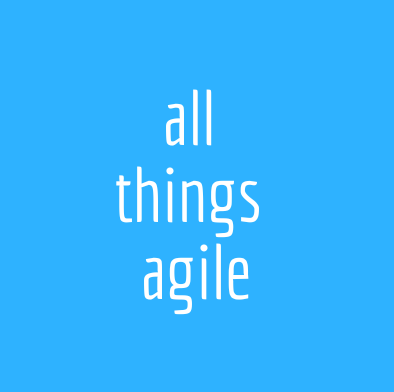
I already introduced in another post the importance of Cadences and Daily Standup to give the team a rhythm and a moment to synchronize. Any Agile framework will introduce this practice because it’s effective and because it’s simple.
In my early days as a Scrum Master I was adamant and almost terrorized my teams with the punishment of asking them to do push-ups or bringing bagels when they were the late or missing the Daily. When in remote teams they had to sing a song or record a video of themselves… There had to be a consequence. And the Daily had to last 15 minutes. More than that and we were in trouble! As you can guess I was not very much tuned to the spirit of positive reinforcement yet!
I learned something very important throughout these years: that every single interaction has a meaning in a framework, but should also have a meaning in people’s life and heart. And I decided to take action and make sure that every interaction respected people’s humanity. Remember that in the end of the day it is people that attend meetings and events. Or not!
What is a Daily Cafe?
As the name implies, every day you get coffee (or tea, or…). So the meetup with the team happens with our favorite beverage on hands, we can stand or sit, remotely or in person.
We start with greetings and asking each other genuine questions about something we are curious about in their lives. Have they seen the latest Spider man movie? How is the triathlon training going? How are they feeling today? Is their kid still sick?
And then we ease into work. We talk about what is in store for today. No three questions to answer. We all have a look at the work on our board together to make sure whatever was forgotten is picked up and the board is updated if it was not already.
In about 30 minutes, call or in person, we disband. Happy, aligned and connected.
Humanizing the Daily sync
I find the Daily the most important interaction for effectiveness of work for any Agile team. No matter what you plan, everything can go wrong. The Daily is that chance to save it all or re-plan to the best of our abilities. If you plan in iterations, if you take work sequentially from an intake queue, it does not matter. As a team you need to synchronize and that is best accomplished with a daily meetup.
And it naturally became a daily coffee for most of my teams. I’ll tell you that actually many times what happened is that folks would gather ’round with coffee in their hands and naturally talk about the weather, the plans for the weekend and “waste” 10 minutes of the Daily. Sometimes the whole thing started with the team members actually going to get their coffee together and chatting there, before coming to a circle around the board. It was actually a ritual. Much more powerful than simply being an event of a framework, don’t you think?
So what started as a funny anomaly ended up being my A-HA moment as an Agile leader. We’re talking about people working together. We want people to collaborate, to raise their hands in full vulnerability and say they need help. We want them to band together and save the day, the Sprint goal whatever have you. Well, that is best accomplished by humanizing that interaction. By letting the team ease into the meeting.
More than synchronize, bond
And that is the key element: synchronization is needed by teams, by working groups, by whoever needs to coordinate interdependent work. But when we are talking about teams, those that we love to say we want to make them “high performing”, those are formed around trust. Individuals trusting each other, more than just accomplishing work together.
Developing trust requires bonding. And it is a natural human process to develop trust by getting to know the other person, how they think and what moves them. We bond through jokes, through sharing anecdotes. Some of us talk a lot, some of us prefer to just listen and smile.
A note on diversity: not everybody can stand up
No, this is not a silly note. A lot is talked this days about diversity and I like that this conversation is hitting a broader spectrum than race and gender. After all, every human being is unique. And some of us… cannot stand up. Productive members of teams might have some sort of disability, be ill and the “stand up” part, can be a little too much.
In its origins the stand-up part was to make people uncomfortable enough to keep meetings short. Late 1990’s, early 2000’s most companies were bureaucratic and calendars were basically made of meetings. So the idea of standing up was to force focus and bank a few more relevant minutes a day to be able to do work. Today we have better ways of focus and we can and should be empathetic towards bodily comfort for those in need.
Remote and asynchronous work
A Daily Cafe is fun and effective for collocated and remote teams. There is no reason not to get your coffee, sit on your best armchair and turn on your camera (whenever possible) and interact with your peers. That formula works so well that I used it even for teams that have team members in very far timezones. Those types of teams are basically working asynchronously and the Daily Cafe is the only moment those team members can actually synchronize and interact with the rest of the team.
Best Practices
I would like to point out some important practices to keep in mind when establishing a Daily Cafe to make sure it is engaging without losing effectiveness.
1 – A timebox is still needed
Ideally no more than 30 minutes. We still want this to be focused and time-efficient, so remember Parkinson’s Law. 30 minutes seems a sweet spot to have the human connection start of the meeting and a good 15 to 20 minutes to synchronize work.
2 – Create a separate, focused chat
I’ve done it myself as a developer. And as Scrum Master and Team Coach I noticed sometimes developers (and other product makers) are sitting side by side and yet they exchange via chat message. If that is true for collocated, that is fundamental for remote teams!
So, sometimes people miss the Daily Cafe. It is inevitable. The solution? A separate slack channel just for that! Use the chat system of your preference, just make sure there is one and that everybody knows about it.
Call it Work out loud, as suggested by John Stepper since 2014, call it Daily Cafe, anything that for your team makes clear that the sole purpose is to share what a team member is doing that is worth others knowing. Messages there should be a few per day and rather concise. No problems solving or chit chat happens in this channel. This is a very focused space that helps with… you guessed: team synchronization.
To know more about the Working out loud, visit their website.
3 – Keep it steady: same time everyday
People can join or not join. Eventually most people do! But the fact is that sometimes people will miss it and you are covered on the synchronization part by having your focused chat. Keeping the Daily Cafe at the same time simplifies it as everybody can remember, it’s easy to adopt as a ritual and plan the day around it. It’s about the power of habits.
4 – Adapt to your core hours
It does not need to be the first thing in the day and you should pay attention at the core hours of the team to make sure every single team member can attend. The best way is to let the team decide when they want to establish the Daily Cafe, so that they have a better chance of sticking to it. For some it will be the first thing in the day, for others, the last. And it actually just gives the whole team the great overview on how the work is flowing uninterruptedly across locations. It’s actually really neat!
Conclusion
I love Daily Cafes and I find that it works great for employees and consultants, given its vibe and autonomous organization. And you? Does your team already follow a Daily Cafe or something similar? Or do you prefer the Daily Standup version with 15 minutes sharp? What are your thoughts after reading this post?



